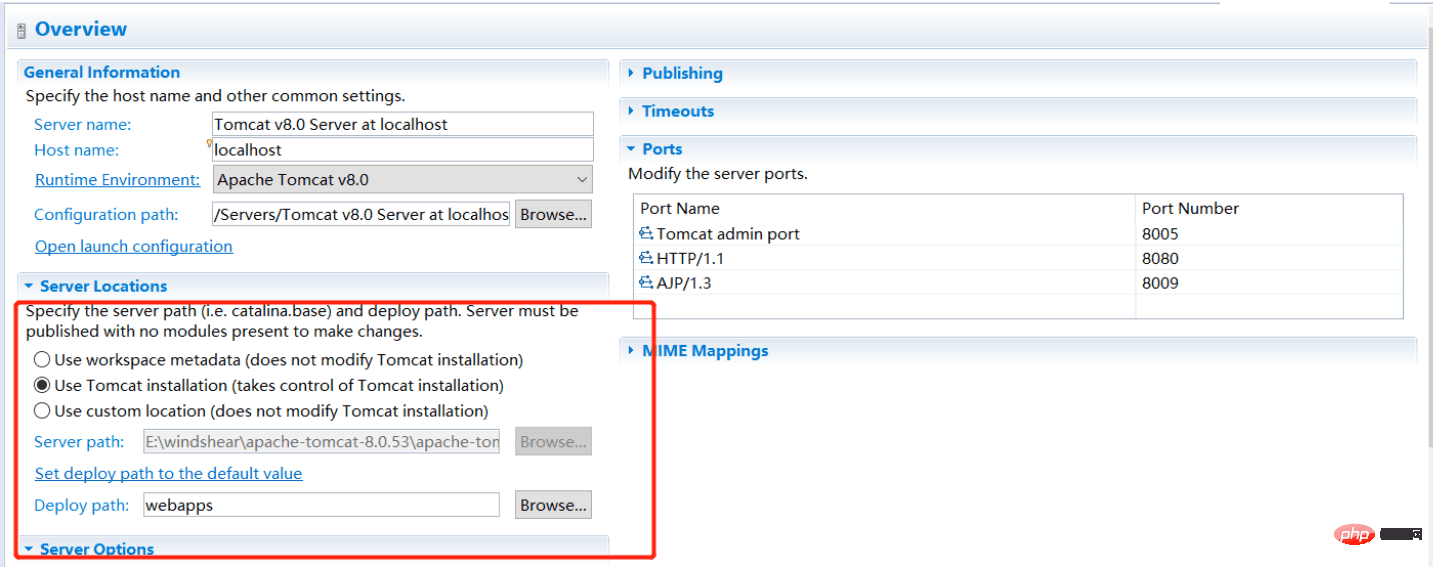
Because we deploy the project on the web side in eclipse ee, 404 errors often occur.
The reason is:
404 status code is an http status code, which means: The requested page does not exist or has been deleted. In layman's terms, it is the page returned when the user enters the wrong link.

The following describes several situations:
The first: eclipse publishes the tomcat project directory (webapp in the tomcat directory ) is redirected, so you will find that your project file cannot be found in the webapp directory under the tomcat installation directory.
Solution:
Reconfigure the tomcat server. First clear all the projects in Tomcat to prepare for selecting Use tomcat installation below (you may not be able to select it without this step) Use tomcat installatio)

1. Select Use tomcat installation (Task control of Tomcat installation), that is, select the tomcat installation directory as the project release directory.
2. Change the default value of Deploy Path "wtpwebapps" to "webapps".

Restart Tomcat and run the .jsp file.
3. Check whether the address in the browser address bar is consistent with the path requested by the code. If they are inconsistent, it will result in 404
4. If the address in the browser address bar is consistent with the path requested by the code, a 404 error will still be reported. Check whether the tomcat of eclipse has been started. Restart it with start or debug.
5. Check whether the path to the page you jump to, folders at all levels, and file names exist. For example, the jump path is jdbc/messageServlet. You need to find the jdbc folder in the corresponding interface and the @WebServlet("xx") and searchByName.jsp interfaces in the messageServlet.java file below to check whether the writing of action="xx" is consistent.
6. (I searched for the 404 error problem all morning, and later found out that jsp cannot be placed on the package I created, which will cause path errors, and finally solved the problem of page 404).jsp file cannot be placed In other Package packages, 404 errors will always be reported, so it is best to place them in the webapp directory.
7. 404 error occurs in servlet: The main reason for encountering this problem during development is the path error
Solution: For example, the path submitted by the form messageServlet, a 404 error is found after starting the server. You can find the reason from the path.

As shown in the messageServlet, don’t forget to annotate the configuration @WebServlet(“/xxxServlet”) or write it as @WebServlet(value="/xxxServlet”)
The value in value must be consistent with the value of the form submitted by the form.
You can also add a virtual directory at the form submission point to solve the 404 problem:
${pageContext.request.contextPath}/xxxServlet
as follows Display:

#The problem can be solved by running Tomcat again.
The access root path of the web project error reports 404
The modification steps are as follows:

After the change, deploy to tomcat, if it does not take effect , you can enter the server.xml file of tomcat to check whether the settings are correct.

The above is the detailed content of How to solve the 404 error reported by Java web when accessing http://localhost:8080/xx/xx.jsp. For more information, please follow other related articles on the PHP Chinese website!




